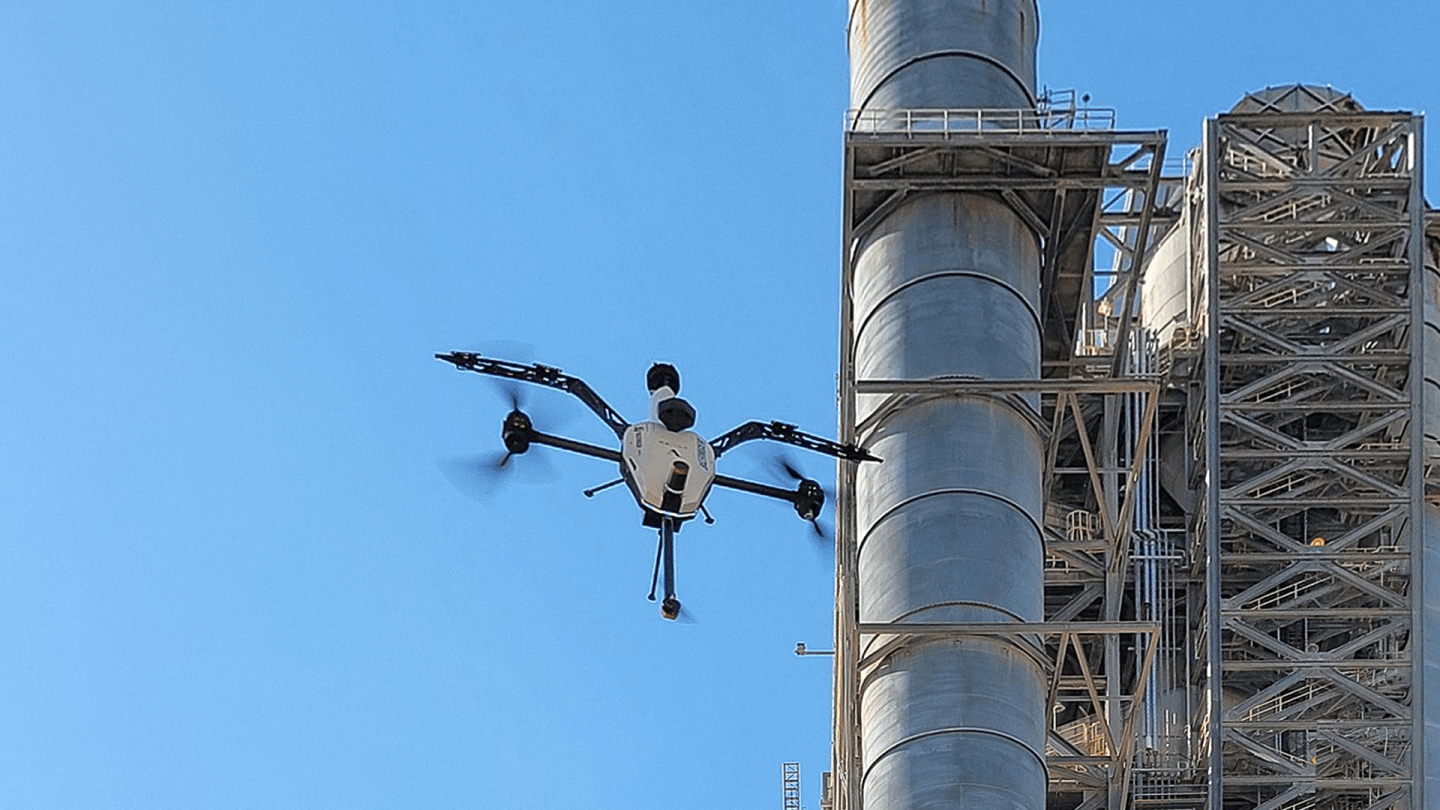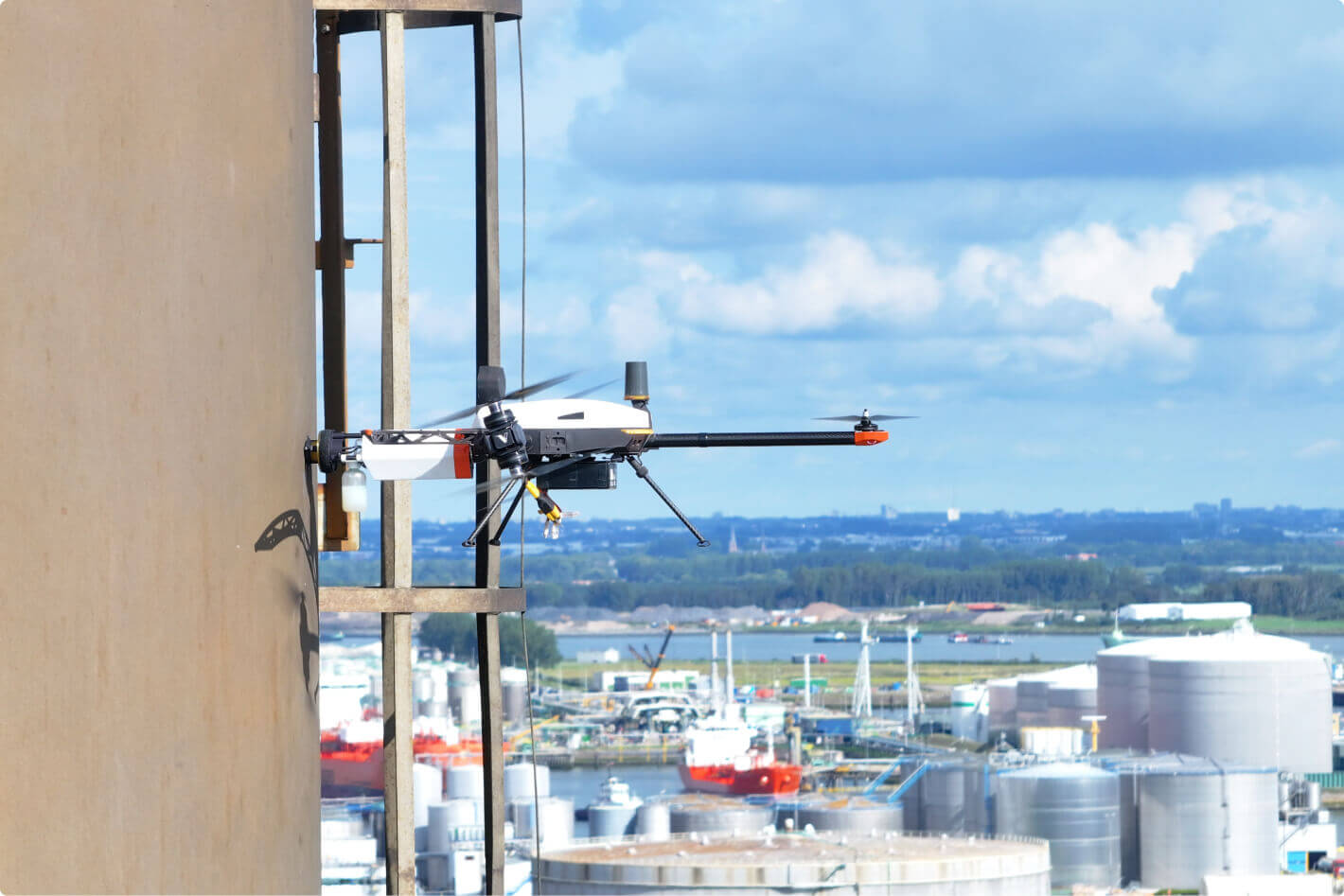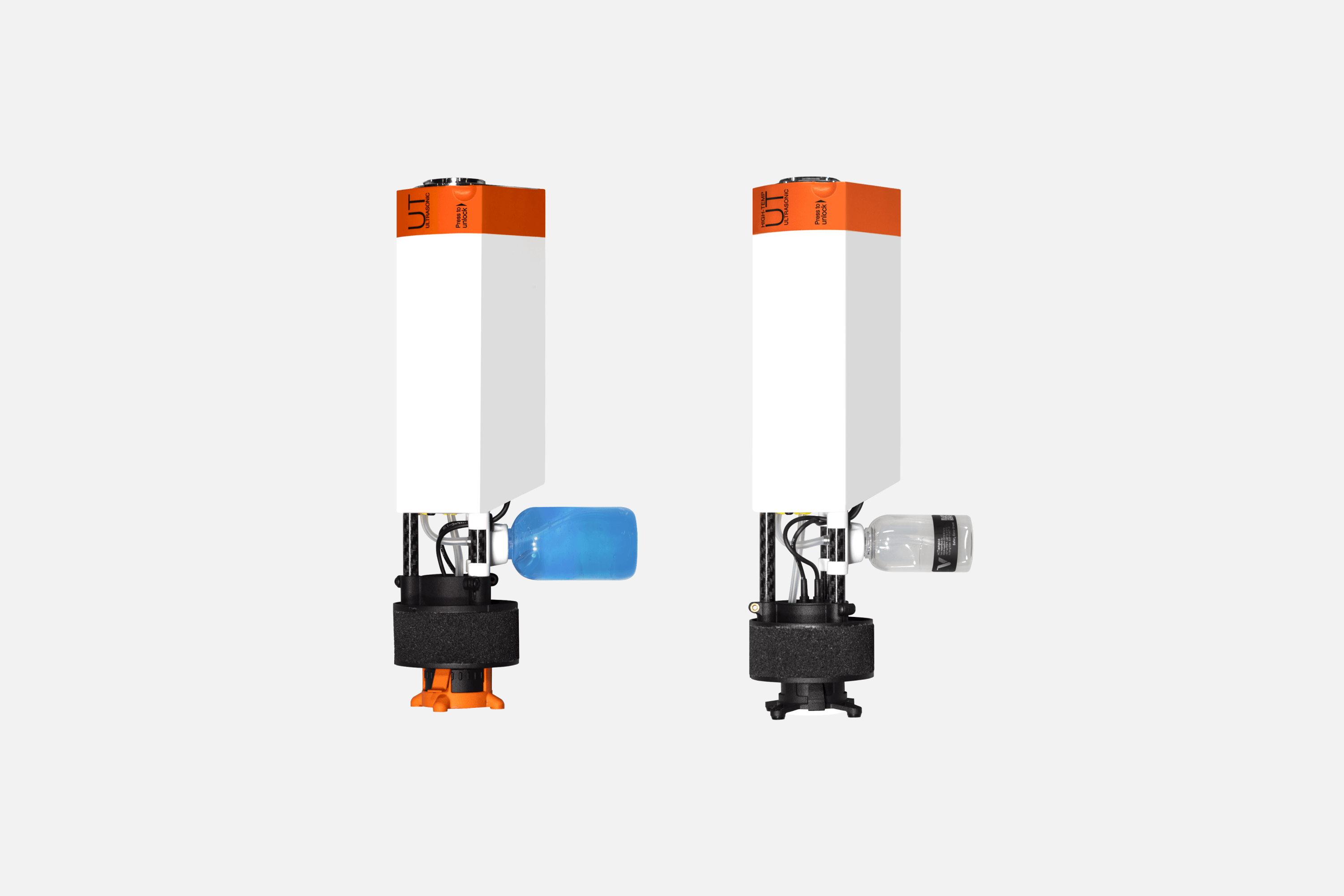Bilfinger deployed their Voliro T drone team at a customer’s facility in Missouri to inspect a 400 feet stack.

Rapid Turnaround: The crew completed the stack inspection in just 1.5 days—a significant reduction from the typical 25 days required with scaffolding, streamlining project schedules and reducing downtime.
Significant Cost Savings: Employing the Voliro T demonstrated substantial financial benefits, notably saving Bilfinger’s client $165,000. This cost efficiency stems from the drastic reduction in labor, equipment, and time.
Streamlined Workforces: Efficiency markedly improved by reducing the necessary crew size from 10 to merely 2. This lean approach not only simplifies logistics but also minimizes human resource deployment for inspection tasks.
The realm of Non-Destructive Testing (NDT) inspections is undergoing significant advancements thanks to the integration of robotic technologies. Traditionally, inspecting tall structures posed significant challenges, both financially and operationally. High structure testing often required the construction of expensive and time-consuming scaffolding or the employment of specialized rope access teams. This approach not only elevated the costs but also extended the duration of projects, all while exposing human inspectors to considerable risks associated with working at heights.
Voliro is revolutionizing this domain with its pioneering mobile robotics technology. Positioned at the cutting edge of innovation for work at height, Voliro’s aerial robots are designed to perform contact-based, close-to-structure tasks with an unprecedented level of precision and versatility. These flying robots are equipped with a variety of payloads, including NDT sensors and Lightning Protection System (LPS) sensors, to cater to diverse inspection needs.

Bilfinger’s customer routinely gathers UT information from their stacks once a year as part of their asset integrity inspection. For this inspection, the Bilfinger crew used their Voliro T drone equipped with a UT payload purposely designed for UT inspections at height like stacks and chimneys.
Ultrasonic testing is a non-destructive testing (NDT) method that uses high-frequency sound waves to examine material characteristics and take dimensional measurements. Ultrasonic testing is ideal for examining large industrial assets like flare stacks, wind turbines, storage tanks, or pipes. With the right instruments, inspections can be performed in a few hours with minimal asset downtime.
The standard UT probe is able to measure thickness in the range of 2 – 150 mm (0.08 – 5.9 in). Our High Temp UT probe can operate at temperatures between 0 – 260 °C (32 – 500 °F), avoiding the need to cool objects down during inspections.

Our technology significantly enhances operational efficiency, making the process of inspections not only more reliable but also more cost-effective.
Choosing Voliro T for NDT inspection unlocks numerous benefits:
Maximize the utilization of shutdown time by conducting comprehensive inspections within the planned time frame
Conduct more thorough inspections in less time, increasing your efficiency and productivity
Significantly improve cost-effectiveness by streamlining inspection processes
Complement your traditional methods with cutting-edge drone technology, expanding your service portfolio and providing versatile solutions
